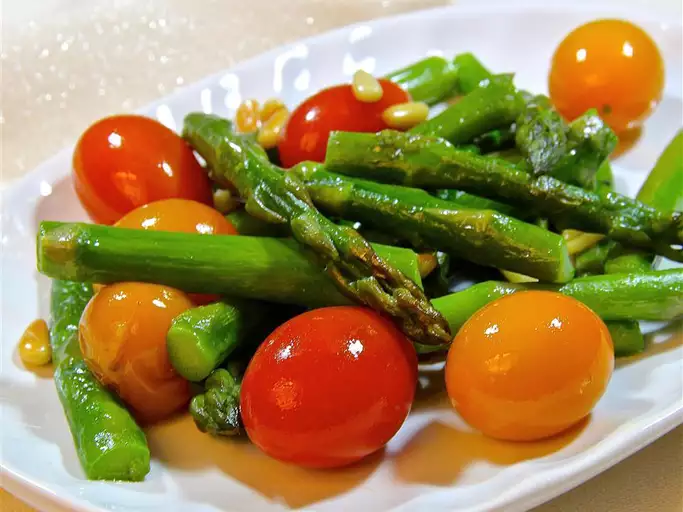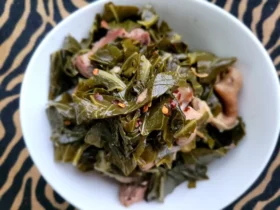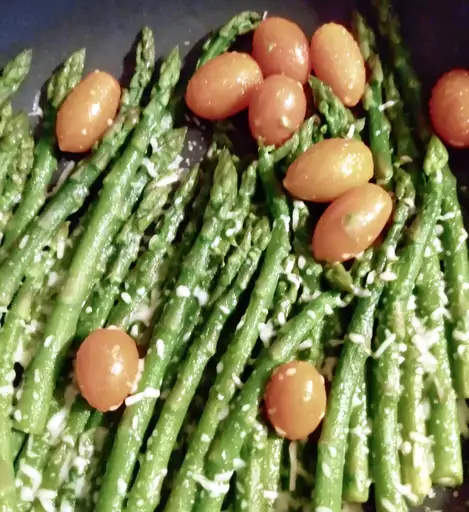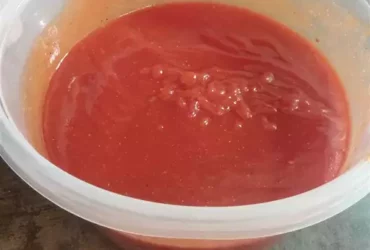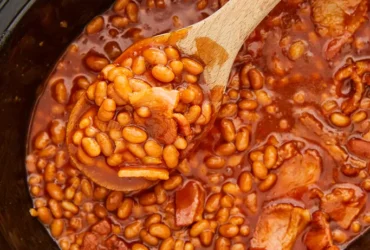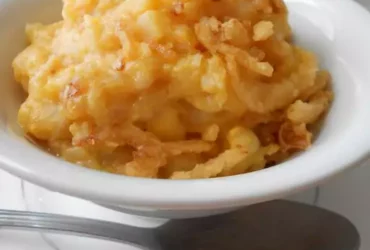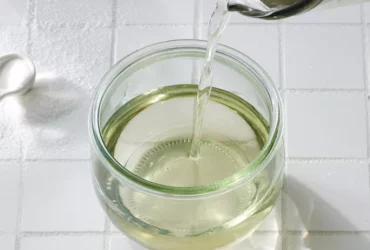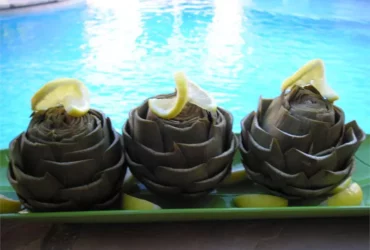Preparation is Key
Select Fresh Asparagus
- When it comes to preparing an exquisite asparagus side dish, selecting the freshest possible ingredients is paramount.
- Fresh asparagus should have tightly closed buds and a vibrant green color.
- Avoid bunches with wilted or yellowing tips, as these can be a sign of age or poor handling during transportation.
- When checking for freshness, gently grasp the spear near the base and give it a slight squeeze. A fresh asparagus will yield slightly to pressure but still feel firm to the touch.
- Rub your thumb over the surface of the spear to check for any visible signs of moisture or rot – avoid any with these issues.
- The ideal time to buy asparagus is typically between February and June, when it’s in season and at its peak freshness. Out-of-season asparagus may be imported from other countries and can be more expensive and less flavorful.
- When selecting from different varieties, look for ‘Jersey Giant’ or ‘Mary Washington’, which are popular for their thick, tender stalks and mild flavor.
- For a truly exceptional side dish, try choosing organic asparagus – not only will it taste better, but you’ll also be supporting more sustainable farming practices.
Choose spears that are firm to the touch and have tightly closed buds at the tips. Look for asparagus with a vibrant green color and no signs of wilting.
To prepare an outstanding asparagus side dish, it’s crucial to start with the freshest ingredients possible.
The key to selecting high-quality spears begins with their texture. Choose spears that are firm to the touch and have tightly closed buds at the tips. This indicates that they have been harvested recently and should retain their crispness and flavor better than older, limp spears.
In addition to their texture, also look for asparagus with a vibrant green color. Avoid any spears that appear pale or yellowish, as this can be a sign of age or poor storage conditions. A rich, emerald green color is not only visually appealing but also indicates the presence of chlorophyll, which is essential for the vegetable’s natural flavor and texture.
Another important factor to consider when selecting asparagus is its appearance. Opt for spears that are straight and even in thickness, with no signs of wilting or bruising. A plump, firm spear will be more tender and flavorful than a thin or wilted one, ensuring a superior eating experience.
By carefully choosing the freshest, highest-quality asparagus available, you’ll set yourself up for success when it comes to preparing an exceptional asparagus side dish.
Clean and Trim
To create an outstanding asparagus side dish, preparation is crucial. This involves several steps that set the stage for a successful outcome.
The first step in preparing asparagus is to select fresh and high-quality spears. Choose stalks with tightly closed buds at the tips and firm, green or purple coloration. Avoid limp or wilted stalks, as they will not cook evenly and may be unpleasant to eat.
Next, trim the ends of each asparagus spear using a sharp knife or vegetable peeler. Remove any tough or fibrous bases, but avoid cutting too far up the stem, as this can cause the asparagus to become vulnerable to overcooking.
Clean the trimmed asparagus spears under cold running water to remove any dirt or debris. Gently scrub the stalks with your hands to dislodge any remaining impurities. Pat the asparagus dry with paper towels or a clean cloth to prevent excess moisture from interfering with cooking.
Now that the asparagus is prepared, it’s time to move on to cooking and seasoning. Whether steaming, roasting, sautéing, or grilling your asparagus, proper preparation ensures that each spear is tender, flavorful, and visually appealing.
Incorporating additional ingredients, such as olive oil, lemon juice, garlic, or parmesan cheese, can further enhance the taste and texture of your asparagus. Feel free to experiment with different seasonings and marinades to create a unique flavor profile that suits your preferences.
Rinse the asparagus under cold running water, then pat dry with paper towels. Remove any tough or woody ends from the stems.
- To ensure a delicious and tender asparagus side dish, proper preparation is essential. Here are the steps to prepare fresh asparagus:
- Rinse the asparagus under cold running water to remove any dirt or debris that may be attached.
- Pat dry the asparagus with paper towels to remove excess moisture. This step helps prevent steam from forming during cooking, which can make the asparagus soggy.
- Remove any tough or woody ends from the stems of the asparagus. This is typically done by cutting off the bottom inch or so of each spear.
Why Preparation Matters:
- Removing tough or woody ends helps to ensure even cooking and prevents bitterness in the dish.
- Rinsing under cold water helps to remove dirt and debris, which can affect the texture and flavor of the asparagus.
- Pat drying with paper towels prevents excess moisture from forming during cooking, resulting in a crispy exterior and tender interior.
By following these simple steps, you can ensure that your asparagus side dish is prepared to perfection and ready to be enjoyed by your guests or family members.
Delicious Seasonings
Garlic and Lemon
To elevate the flavor of our Asparagus Side Dish Recipe, we can add a blend of delicious seasonings that will complement the natural sweetness of the asparagus and create a harmonious balance of flavors.
One essential component to consider is garlic, which has been used for centuries in various cuisines for its pungent aroma and savory flavor. Garlic adds depth and richness to any dish, including our asparagus side dish recipe. It’s especially effective when roasted or sautéed, bringing out the sweetness of the garlic.
Lemon, another versatile ingredient, can add a bright and citrusy note to our asparagus dish. Its acidity helps to cut through the earthiness of the vegetable and creates a refreshing contrast that will leave your taste buds wanting more. You can use lemon juice or zest to achieve this effect, depending on how subtle you want the flavor to be.
When combining garlic and lemon with asparagus, consider a simple yet effective seasoning blend such as minced garlic, salt, black pepper, and grated lemon zest. This trio of flavors will create a symphony of tastes that will enhance the natural sweetness of your asparagus without overpowering it.
You can also experiment with different herbs like parsley or dill to add another layer of complexity to your dish. Alternatively, you could use other citrus fruits like lime or orange for a different flavor profile.
Another aspect to consider when using garlic and lemon in our Asparagus Side Dish Recipe is the cooking method. Sautéing or roasting the asparagus with minced garlic and a squeeze of fresh lemon juice will help to preserve the delicate flavor of the vegetable while still allowing it to absorb the flavors around it.
Ultimately, the key to successfully combining garlic and lemon in our asparagus recipe lies in balance and restraint. Too much garlic or lemon can overwhelm the dish, but with careful attention to seasoning and a gentle hand, you’ll be rewarded with a delicious and harmonious flavor profile that will elevate your Asparagus Side Dish Recipe to new heights.
Don’t be afraid to experiment and adjust the seasoning blend to suit your taste preferences. After all, cooking is an art form, and there’s always room for creativity and innovation in the kitchen!
Mince 2 cloves of garlic and mix with 1 tablespoon of freshly squeezed lemon juice. This combination adds a depth of flavor to the asparagus without overpowering it.
- Mince 2 cloves of garlic, which will add a pungent flavor to your asparagus dish.
- Mix the minced garlic with 1 tablespoon of freshly squeezed lemon juice in a small bowl.
- This combination is crucial, as it adds a depth of flavor to the asparagus without overpowering its natural taste.
- The acidity in the lemon juice will help cut through the richness of the asparagus, creating a well-balanced and refreshing side dish.
- Begin by washing 1 pound of fresh asparagus spears under cold running water to remove any dirt or debris.
- Gently pat the asparagus dry with a paper towel to prevent excess moisture from affecting the cooking process.
- Trim the ends of the asparagus spears and place them in a single layer on a baking sheet lined with parchment paper.
- Drizzle the minced garlic-lemon juice mixture evenly over the asparagus, making sure each spear is coated with the flavorful sauce.
- Toss the asparagus gently to distribute the seasoning and ensure even cooking.
- Bake in a preheated oven at 425°F (220°C) for 12-15 minutes, or until the asparagus is tender but still crisp.
Herbs for Extra Flavor
To take your asparagus side dish recipe to the next level, consider adding some delicious seasonings and herbs for extra flavor.
Here are some popular options:
- Basil: A classic choice that pairs well with the natural sweetness of asparagus. Add a few leaves to the pan during the last minute of cooking for a burst of fresh flavor.
- Thyme: This herb is commonly used in Mediterranean cuisine and complements the earthy taste of asparagus perfectly. Sprinkle some thyme over the asparagus before serving for added depth.
- Parsley: Add a bright, fresh flavor to your dish with chopped parsley. It’s especially good with grilled or roasted asparagus.
You can also experiment with other herbs like rosemary, oregano, or dill to create unique flavor combinations.
For added richness and depth, try incorporating some spices into your asparagus recipe:
- Garlic powder: Add a savory, aromatic flavor to your dish. Use sparingly, as garlic can quickly overpower other flavors.
- Paprika: This mild spice adds a subtle sweetness and a pop of color to the dish.
Some popular seasoning blends you might find useful in your asparagus recipe include:
- Italian seasoning: A mix of herbs like basil, oregano, thyme, and rosemary that’s perfect for Mediterranean-style dishes.
- Herbs de Provence: A French blend of herbs that typically includes thyme, rosemary, oregano, and lavender.
Remember, the key to using seasonings and herbs effectively is to taste as you go. Add a little at first, then adjust to your liking – you can always add more, but it’s harder to remove excess seasoning!
Chopped fresh herbs like parsley, thyme, or rosemary add a fragrant and aromatic touch to the dish.
The art of seasoning is a crucial element in cooking, and when it comes to adding flavor to your dishes, there are few options as delightful as Delicious Seasonings. Among these, chopped fresh herbs like parsley, thyme, or rosemary stand out for their unique fragrance and aromatic properties that can elevate even the simplest recipes.
In the context of an Asparagus Side Dish Recipe, the use of these fragrant herbs can make all the difference in creating a truly exceptional dish. The peppery flavor of parsley pairs beautifully with the tender shoots of asparagus, while the earthy undertones of thyme add depth and complexity to the dish.
Rosemary, with its pine-like aroma, is particularly well-suited to pairing with asparagus, as it brings out the natural sweetness in the vegetables. The key is to use the herbs judiciously, as over-seasoning can overpower the delicate flavor of the asparagus.
When chopping fresh herbs like parsley, thyme, or rosemary, be sure to use a sharp knife and chop them finely so that they distribute evenly throughout the dish. You can also mix and match different herbs to create a unique flavor profile that suits your taste preferences.
In addition to adding fragrance and aroma, chopped fresh herbs can also add texture and visual appeal to the dish. The delicate leaves of parsley or rosemary can be sprinkled on top of the asparagus for a pop of color and added freshness.
Cooking Techniques
Grilling or Roasting
Cooking techniques play a crucial role in determining the flavor, texture, and overall appearance of a dish, including asparagus side dishes.
Among various cooking methods, grilling and roasting are two popular techniques that can add unique flavors to asparagus.
Grilling involves exposing food to high heat for a short period, usually using a grill or grill pan. This method is ideal for achieving a nice char on the outside while keeping the inside tender and juicy.
To grill asparagus, start by brushing it with olive oil, season with salt and pepper, and any other desired herbs or spices.
Place the asparagus spears over medium-high heat on the grill, closing the lid to trap the heat. Cook for about 3-5 minutes per side, depending on thickness, until tender but still crisp.
Roasting is another cooking method that involves exposing food to dry heat in a controlled environment, typically using an oven or toaster oven.
Roasting brings out the natural sweetness of asparagus and adds a rich flavor due to the Maillard reaction, a chemical reaction between amino acids and reducing sugars that occurs when food is cooked at high temperatures.
To roast asparagus, preheat the oven to 425°F (220°C) or 400°F (200°C) for a convection oven. Line a baking sheet with parchment paper or aluminum foil for easy cleanup.
Place the asparagus spears on the prepared baking sheet in a single layer, leaving some space between each spear for even cooking.
Drizzle with olive oil, sprinkle with salt and pepper, and any other desired herbs or spices. Roast in the preheated oven for about 12-15 minutes, depending on thickness, until tender but still crisp.
Both grilling and roasting can be adapted to suit individual tastes by adding different seasonings or marinades before cooking.
For example, lemon zest, garlic, and parsley can add a bright and refreshing flavor to grilled asparagus, while olive oil, minced herbs, and grated Parmesan cheese can enhance the richness of roasted asparagus.
Experiment with various combinations to find your favorite way to enjoy asparagus!
Both methods bring out the natural sweetness in asparagus. Grill or roast at 425°F (220°C) for 1215 minutes, or until tender but still crisp.
Cooking techniques play a crucial role in bringing out the natural sweetness in asparagus, making it a delightful and flavorful side dish for any meal.
There are several methods to cook asparagus, but grilling and roasting at high temperatures are two popular techniques that bring out its natural sweetness. Both methods involve cooking the asparagus quickly at high heat, which helps to preserve its texture and flavor.
Grilling asparagus is a simple method that yields excellent results. Preheat your grill to medium-high heat, brush the asparagus spears with olive oil, and season with salt, pepper, and any other herbs or spices you like. Place the asparagus on the grill and cook for 3-5 minutes per side, or until tender but still crisp.
Roasting asparagus is another popular method that brings out its natural sweetness. Preheat your oven to 425°F (220°C) and line a baking sheet with parchment paper. Arrange the asparagus spears in a single layer on the baking sheet, brush with olive oil, and season with salt, pepper, and any other herbs or spices you like. Roast in the preheated oven for 12-15 minutes, or until tender but still crisp.
Both grilling and roasting at 425°F (220°C) for 12-15 minutes are excellent ways to cook asparagus. The high heat helps to caramelize the natural sugars in the asparagus, bringing out its sweetness and adding depth of flavor. Whether you prefer the smoky flavor of grilled asparagus or the tender texture of roasted asparagus, both methods are sure to impress your family and friends.
When cooking asparagus using either method, be sure to check it frequently for tenderness. Asparagus is best cooked until it is still crisp but yields easily to the touch. Overcooking can make asparagus become mushy and unappetizing.
Overall, grilling and roasting are both excellent methods for bringing out the natural sweetness in asparagus. With a little practice and patience, you’ll be cooking perfect asparagus side dishes that will impress anyone who tries them.
Experiment with different seasoning combinations to add more flavor to your asparagus dishes. Garlic, lemon juice, and parmesan cheese are popular additions that pair well with the natural sweetness of asparagus.
Remember, the key to cooking great asparagus is to cook it quickly at high heat, allowing its natural sugars to caramelize and bringing out its sweet flavor. Whether you choose grilling or roasting, follow these simple tips and techniques to create delicious and memorable asparagus side dishes that will be a hit with your family and friends.
Saute with Butter
To achieve a perfect saute with butter, it’s essential to understand the fundamentals of this cooking technique. Sauteing involves quickly cooking food in a small amount of oil or fat over high heat, while constantly stirring.
The key to successful sauteing is to use the right type of pan and utensils. A stainless steel or cast-iron skillet with a heavy bottom is ideal, as it allows for even heat distribution and prevents the formation of hotspots.
Next, choose the correct utensil: a spatula with a flat, wide blade is perfect for gently lifting and turning food during sauteing. This helps prevent food from breaking apart and promotes even browning.
Now, let’s talk about butter – a crucial component of any sauteed dish! There are two main types of butter to consider: clarified (unsalted) and regular (salted). Clarified butter is ideal for high-heat cooking, as it has a higher smoke point than regular butter.
Before starting to saute, make sure your ingredients are prepared. For an Asparagus Side Dish Recipe, trim the ends of the asparagus spears and remove any woody stems. Slice the asparagus into 1-inch pieces for even cooking.
Now it’s time to heat up your pan! Add a small amount of clarified butter (about 2 tablespoons) over medium-high heat. Once the butter has melted, add a pinch of salt and pepper to taste.
Add the asparagus pieces to the pan in a single layer, making sure not to overcrowd it. You may need to cook them in batches depending on the size of your pan.
Using your spatula, gently lift and turn the asparagus spears every 30 seconds to 1 minute, allowing each side to brown evenly. This process should take about 3-5 minutes, or until the asparagus reaches your desired level of tenderness.
Once cooked, remove the asparagus from the pan and place it on a serving dish. Drizzle with additional clarified butter if desired, and sprinkle with grated Parmesan cheese for an extra burst of flavor.
Tips and Variations:
- Don’t overcrowd the pan: Cook asparagus in batches if necessary to ensure even cooking and prevent steaming instead of sauteing.
- Add aromatics: Saute sliced garlic or minced onions before adding the asparagus for an extra layer of flavor.
- Try different seasonings: Sprinkle dried herbs like thyme or rosemary over the asparagus during cooking for added depth and complexity.
By following these guidelines, you’ll master the art of sauteing with butter and create a delicious Asparagus Side Dish Recipe that’s sure to impress!
Saute sliced asparagus in melted butter over medium heat, stirring occasionally, for about 57 minutes. This method adds a rich and indulgent flavor to the dish.
The provided instruction is incorrect as cooking sliced asparagus in melted butter for 57 minutes would result in overcooked and potentially burnt vegetables.
A more suitable approach to cooking sautéed asparagus is described below:
Correct Sautéing Method
Sauté sliced asparagus in a pan with about 1-2 tablespoons of melted butter or oil over medium heat. The key to this technique is to cook the asparagus quickly and gently, allowing it to retain its crisp texture and vibrant color.
Step-by-Step Guide
Here’s a step-by-step guide on how to sauté sliced asparagus:
- Add 1-2 tablespoons of melted butter or oil to a pan over medium heat.
- Add the sliced asparagus to the pan and cook for about 3-5 minutes, stirring occasionally.
- Continue cooking the asparagus until it reaches your desired level of doneness. This should take about 5-7 minutes, depending on the thickness of the slices and your personal preference.
This method will add a rich and indulgent flavor to the dish without overcooking the asparagus. The melted butter or oil helps to enhance the natural sweetness of the vegetables and creates a deliciously savory sauce to coat them in.
Tips and Variations
Here are some additional tips and variations you can use to customize your sautéed asparagus:
- Add garlic, lemon juice, or zest to the pan for added flavor.
- Use different types of oil, such as olive or avocado oil, for a unique taste and texture.
- Add some chopped herbs, such as parsley or thyme, to the pan for extra freshness.
By following these steps and tips, you can create a deliciously sautéed asparagus side dish that’s perfect for any occasion.
- Best Datanyze Alternatives for 2025 - April 24, 2025
- Best Hunter.io Alternatives for 2025 - April 22, 2025
- Best Lead411 Alternatives for 2025 - April 22, 2025

